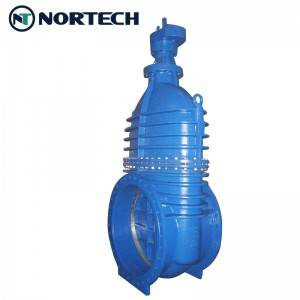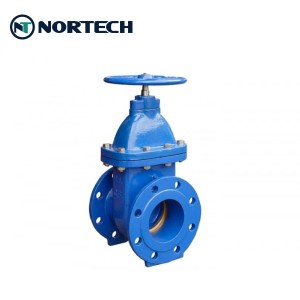Gate valve refers to a valve in which the closing member (gate) moves in the vertical direction of the centerline of the passage. The gate valve can only be used for fully open and fully closed shut-off in the pipeline, and cannot be used for adjustment and throttling. Gate valve is a kind of valve with a wide range of use. Generally, DN50 cut-off devices are selected for use, and sometimes gate valves are also used for cut-off devices with small diameters. The gate valve is used as a cut-off medium, and the whole flow is straight when it is fully opened. At this time, the pressure loss of the medium is minimal. Gate valves are usually suitable for working conditions that do not need to be opened and closed frequently and keep the gate fully open or fully closed. Not suitable for use as regulation or throttling. For the high-speed flowing medium, the gate can cause vibration of the gate when it is partially opened, and the vibration may damage the sealing surface of the gate and the valve seat, and the throttling will cause the gate to be eroded by the medium.
From the structural form, the main difference is the form of the sealing element used. According to the form of sealing elements, gate valves are often divided into several different types, such as: wedge gate valve, parallel gate valve, parallel double gate valve, wedge double gate valve, etc. The most commonly used forms are wedge gate valves and parallel gate valves.
The gate has two sealing surfaces. The two sealing surfaces of the most commonly used wedge gate valve form a wedge. The wedge angle varies with valve parameters, usually 5 degrees. The gate of the wedge gate valve can be made into a whole, called a rigid gate; it can also be made into a gate that can produce slight deformation to improve its manufacturability and make up for the deviation of the sealing surface angle during the processing. The plate is called an elastic gate.
When the gate valve is closed, the sealing surface can only rely on the medium pressure to seal, that is, relying on the medium pressure to press the sealing surface of the gate to the valve seat on the other side to ensure the sealing of the sealing surface, which is self-sealing. Most gate valves adopt forced sealing, that is, when the valve is closed, the gate must be forced against the seat by external force to ensure the tightness of the sealing surface.
The gate valve of the gate valve moves linearly with the valve stem, which is called the lifting stem gate valve (also called the rising stem gate valve). Usually there is a trapezoidal thread on the lifting rod, through the nut on the top of the valve and the guide groove on the valve body, the rotary motion is changed into linear motion, that is, the operating torque is turned into operating thrust.
When the valve is opened, when the lift height of the gate is equal to 1:1 times the valve diameter, the fluid passage is completely unblocked, but this position cannot be monitored during operation. In actual use, the apex of the valve stem is used as a mark, that is, the position where it cannot be opened, as its fully open position. In order to take into account the locking phenomenon due to temperature changes, it is usually opened to the top position, and then back 1/2~1 turn, as the position of the fully open valve. Therefore, the fully open position of the valve is determined by the position of the gate (that is, the stroke).
Nortech is one of the leading industrial valve manufacturers in China with quality certification ISO9001.
Major products: Butterfly Valve, Ball Valve,Gate Valve, Check Valve, Globe Vavlve,Y-Strainers, Electric Acurator , Pneumatic Acurators .
Post time: Aug-16-2021


